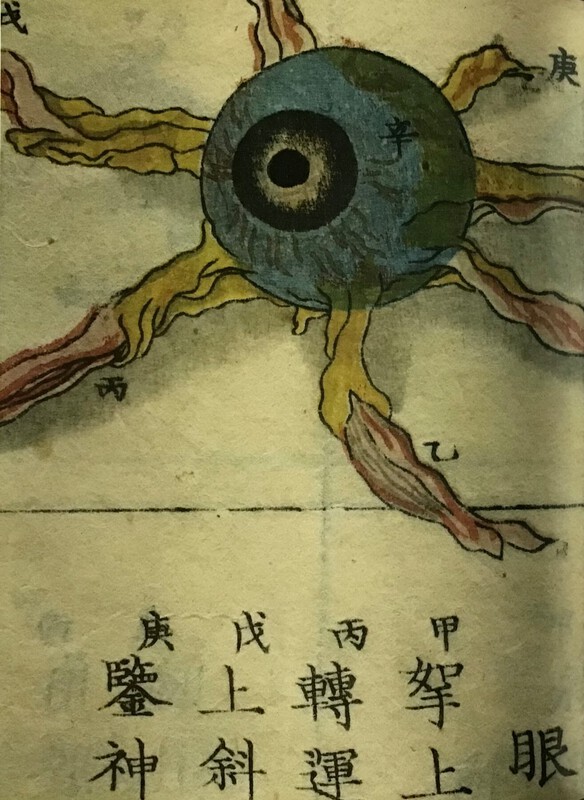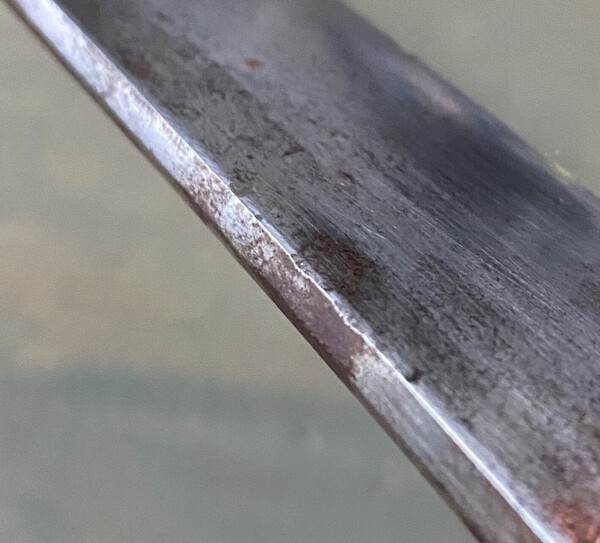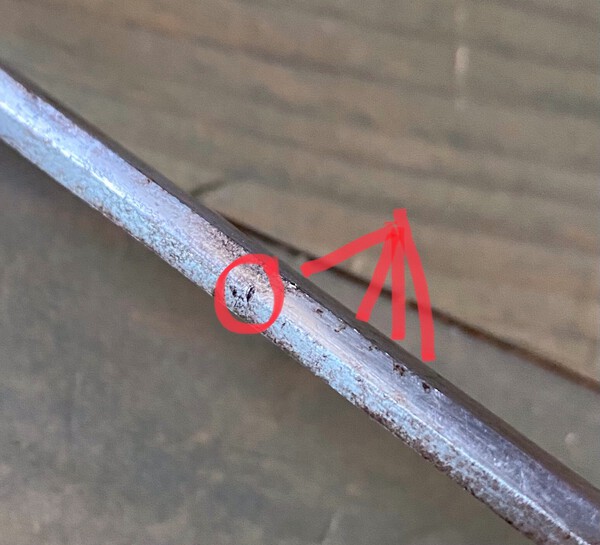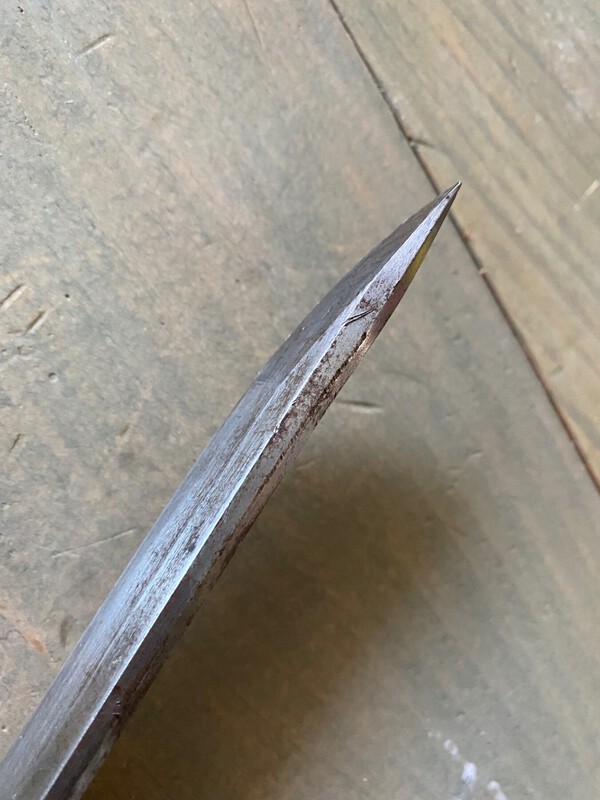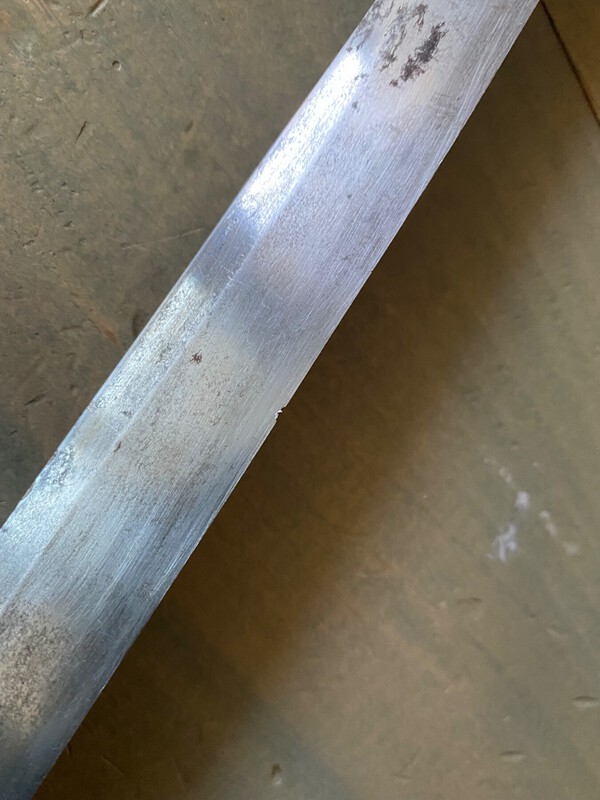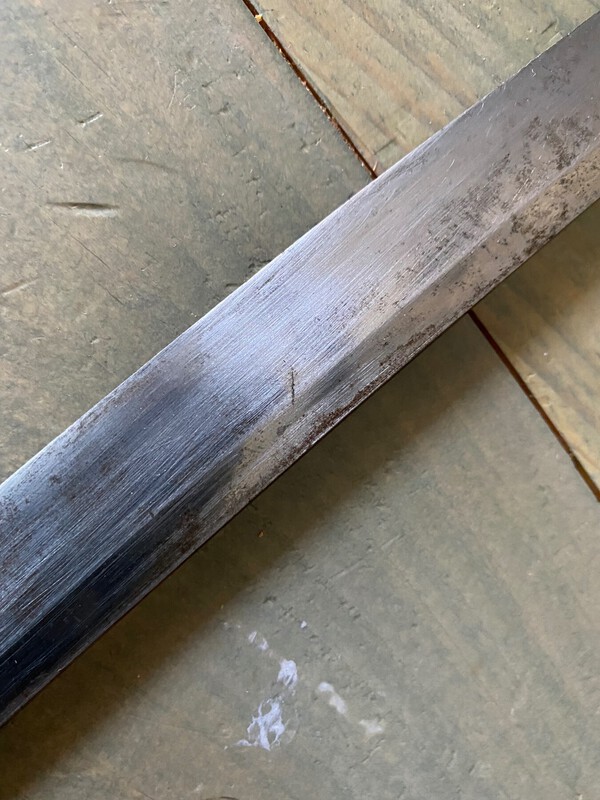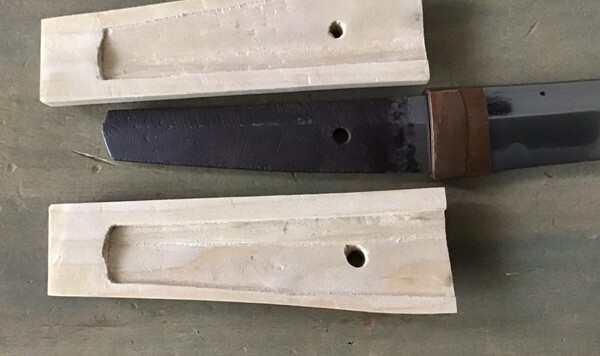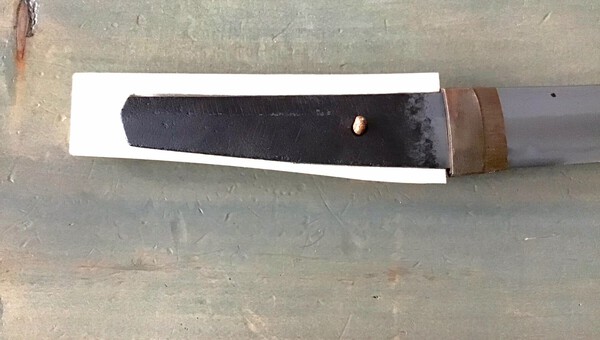-
Posts
238 -
Joined
-
Last visited
Content Type
Profiles
Forums
Events
Store
Downloads
Gallery
Everything posted by WillFalstaff
-
Hi Vieira, Here is how tamahagane steel is made:
-

Top 10 Swordsmiths In Japanese History
WillFalstaff replied to WillFalstaff's topic in General Nihonto Related Discussion
Excellent, Michael! I knew you couldn’t resist! Great reasoning and deduction. Using examples in Japan is a great foundation. -

Rai Kunizane Nanbokucho?
WillFalstaff replied to Utopianarian's topic in General Nihonto Related Discussion
Yeah, I just zoomed in and did a careful study. I do see what you are describing. I know that horimono were often added later (sometimes much later) to blades, so this might be the case with this one. -

Top 10 Swordsmiths In Japanese History
WillFalstaff replied to WillFalstaff's topic in General Nihonto Related Discussion
Can of worms: opened! I hesitate to alter the original question any further just because it broke the dam of knowledge so well. One thing glaringly evident are the cultural differences in how to evaluate smiths. I do think "museum grade" is a red herring here. I think my gaijin brain wants a methodology of ranking that goes against the historical grain of generations of Japanese experts. I just don't feel settled by hearing something like "you can't compare two schools" or "some were okay, some were not; but he was a famous smith". Maybe I need to make something like this: Then I need basic elements to judge a work by (just off the top of my head): -execution of Hada (tight, uniform) -execution of Hamon (consistent nioi-guchi, clear ha-buchi) -sori (does it lend well to other aspects of the blade?) -kissaki (size/shape matching sugata and sori) - . . . Above all, I think a great smith needs to have shown consistent production of fine blades. -

Top 10 Swordsmiths In Japanese History
WillFalstaff replied to WillFalstaff's topic in General Nihonto Related Discussion
Damn! You beat me to it! -

Top 10 Swordsmiths In Japanese History
WillFalstaff replied to WillFalstaff's topic in General Nihonto Related Discussion
Interesting. I'm having a hard time processing how blades from different schools can't be compared to find the better one. Sounds like everything in the universe is quantifiable, except nihonto. I guess defining characteristics that make one blade superior over another is needed here. I keep thinking back to a samurai in the Muromachi period and how he'd rank swords. I think he'd start with "Can this take the stress of battle and not snap? How long can it hold it's edge? Can I look at it at home and see the spirit inside?" @Nihontocollector752 So clearly there is a ranking. Bad and good. Amazing to Incredible. That's a start. What makes the blade bad? What makes the blade good? I think the missing ingredient here is consensus. I also think maybe some dogmatism slips in and rears it's ugly head when we need to start to "kill our darlings". -

Top 10 Swordsmiths In Japanese History
WillFalstaff replied to WillFalstaff's topic in General Nihonto Related Discussion
Sorry guys for staying mum for a few days, I was knocked out by a mystery virus. It wasn't the famous one we've all come to hate. I think my question is highlighting a subject that seems to be fairly important to decipher. There seems to be two world views on this subject: 1. There can be rankings for smiths and the quality of their work by noted groups of experts (NBTHK, NTHK, etc.) 2. These rankings are not often shared on a personal level by collectors. Both of these can be correct, but should be separated. I think I'll update my posting to reflect this. So, let's put personal taste to the side and look at this from a dispassionate objective view. Here's an analogy: A literary editor receives two manuscripts. He reads both, and from the first few pages he can already tell that one is from a sophomore in High School, the other is from a seasoned writer with published works under her belt. Taking this to the realm of swords, a person who has been involved with judging swords can tell an inferior smith (possibly an apprentice) from a smith that has figured out how to create blades that exhibit qualities that make a blade better than some other ones. In this way, I think smiths can be compared to another, and one can be agreed upon by a group of judges one is better than another one. I think this is the point of shinsa, other than trying to identify mumei blades. I think the eye of the beholder belongs to the appreciator of the art. I do also believe smiths themselves tended to (and still do) rank their own works, whether they put their mei on the blade or let it go off to the polishing land as mumei is an example. I think @Peter Bleed brought up a good point about putting aside personal taste when judging quality. -
You may want to go the above route, but if you got a bit of time and use a chopstick temporarily, you can order smoked bamboo from Namikawa (as well as a few other things to justify shipping $$). That's what I did, then made my own pegs. The smoked bamboo won't change as easily due to relative humidity like untreated bamboo (or any other wood) will.
-

Rai Kunizane Nanbokucho?
WillFalstaff replied to Utopianarian's topic in General Nihonto Related Discussion
Well, it does look aged. The hamachi is small so it's been polished more than a few times. The horimono attest to this also, at least on the Ura side, judging by the pictures. Ubu. Sometimes you can tell fire damage on the nakago, though the blade could have taken fire damage on the body only. Having a few out of condition blades, I can attest to how well corrosion of many kinds can hide hamon. A couple of mine (80% covered in rust of one type or another or staining) began showing traces of hamon after repeated uchiko ball treatments. It's got a nice sugata. -

Top 10 Swordsmiths In Japanese History
WillFalstaff replied to WillFalstaff's topic in General Nihonto Related Discussion
Jacques, so what are your personal favorites? Which pieces always make you pause and look, whether you own them or not? -

Top 10 Swordsmiths In Japanese History
WillFalstaff replied to WillFalstaff's topic in General Nihonto Related Discussion
@Jussi Ekholm and @sabiji - all difficult things are worth doing, more so than easy things! @Nihontocollector752, @saipan59, and @b.hennick Thank you for the lists. Thank you for your lists! -

Top 10 Swordsmiths In Japanese History
WillFalstaff replied to WillFalstaff's topic in General Nihonto Related Discussion
@Surfson What is your personal top 10 favorite, ignoring caveats? -
Alright all you experts with decades of knowledge and sword handling experience . . . GO! This is subjective AND objective, i.e.: "I like this over that because of the crab claws in the hamon" AND "I would call this sword an Important Work, but the experts in Japan agree that this sword is not worth Juyo Token ranking."
-
Don't forget the tactical Naruto run
-

Overpolishing of horimono
WillFalstaff replied to Brian's topic in Auctions and Online Sales or Sellers
Just bumped into this on the Kashima sisters's website, towards the bottom: (http://www.ksky.ne.jp/~sumie99/flaws.html) "-Do not restore an original engraving- Some engravings in old blades have been partially erased by much polishing. I wonder if you would like to restore it by some craftsman. But please never touch the original engravings. Engraving is not only a decoration putting on the blade. It is a prayer of samurai old days. You should respect original engravings even though it is erasing." -
Criticism taken with pride! Fixed the dicksleksik wording. Also added an important note from @Shamsy from the Fake Type 95 Nco Sword topic. Real v Fake Type 95 NCO swords.pdf
-
A few more on the mune. I’m thinking this is where a good amount of parrys happen. Martial arts practicioners are welcome to correct me, as I know nothing of Japanese forms.
-
This is on an old wakizashi. Don’t think it was backyard play that caused this. In the first picture, just under the slice into the kissaki, there is some kind of shaving action happening on the iori that starts suddenly and then drags down, almost like a parry, (sorry, don’t know the Japanese term for it), and the angle is also just right for a defensive move.
-
It’s part of the training—read the title, but then keep attention to detail as the real stuff (header) is on the left, fake on the right.
-

Overpolishing of horimono
WillFalstaff replied to Brian's topic in Auctions and Online Sales or Sellers
I keep seeing flattened horimono on some swords for sale, and more frequently than I thought I would. I know Moses Becerra does rehabilitate horimono, but I guess it's not an easy (or even maybe affordable) option, after an expensive polish. I wonder what the cost to benefit ratio is for horimono restoration? -
Oh, Geebus! I heard about this nonsense back in high school. Can't believe someone is still peddling this stuff, with all the research to fact-check this now within a slap of a mouse button.
-
I knew this would come in handy one day! See attached. Fake v Real Type 95 NCO.pdf
-
Looks like the nakago was cleaned by the previous owner. That is a no-no.
-

Gap between Habaki and Tsuka
WillFalstaff replied to IanTan's topic in General Nihonto Related Discussion
Hi Ian, Please excuse my poor experimental tsuka. This is how the nakago should fit into the tsuka. Notice the alignments and the spaces on both halves of the tsuka, as well as the alignment of the mekugi ana. The two lower pics have the mekugi through a tsuka half and the nakago.




